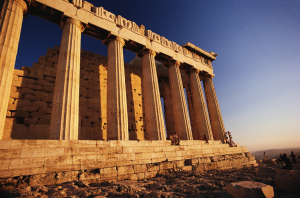When planning any event, organizing is the key which is the part I love. Working through the learning and gathering phases fuels my energy to the organization step. 🙂
Last week in Part 1, I started explaining my process in planning our school’s live history fair. With an understanding of the type of event and then knowing the information to present at the performance, my mind began formulating a plan.
STEP THREE: ORGANIZING
Besides my favorite part of the process, the organizing step is the core of the event. If I emerge from this step with a general idea, then I will waste time and energy re-organizing, re-delegating, and backtracking.
My goal in this step is to reach the end with a clear itinerary, program, or sketch. With this plan, I can funnel all suggestions, recommendations, and changes to fit within the framework. Having this step nailed down tightly removes confusion from the big picture.
Knowing this step’s importance, I spent the bulk of my time organizing our live history fair. I sat with a stack of blank copy paper at my dining room table, which is a large 60’ x 60’ area with lots of space. I began to jot down all the components:
- Page 1: The list of players by group (e.g., K4 and K5 presentation, K4 and K5 music, Grade 1 presentation, Grade 2 presentation, Grade 1 and 2 music, etc.)
- Page 2: A list of all the geography students and the area chosen for their presentations (e.g., John Doe – Bermuda, Plain Jane – Philippines, etc.)
- Page 3: Compiled another list of the American history students with their chosen topics.
With the basic lists written, I went back to page 1 and added in the details. I included the dates of each presentation, the material used (stories, play, poem, etc.), and the titles provided by the teachers.
With all the information in front of me, I started organizing the program on separate sheets:
- Sheet 1: Grade order beginning with kindergarten working up to the upper school students
- Sheet 2: Alphabetical listing of titles and locations
- Sheet 3: Date sequence beginning with the earliest date and working toward modern times
With each option, I hit a snag. The program seemed disjointed working in grade order and alphabetical order. The date sequence worked best, but I lacked true dates for the origin of countries for the geography students.
Since I was not sold on any one idea but I liked parts of each order, I chose to combine them. I used the date sequence for the presentations, the alphabetical order for the geography students, and grouped the music selections by when the students were on stage.
For variety, I interspersed the geography classes’ individual presentations and the group music selections among the group class presentations.
Once I had the program outlined, I took a break. I came back later and reviewed my options. Satisfied with this plan, I asked Paul (my sounding board) and a close friend to look it over. After getting their reaction which resulted in no changes, I forwarded the information to the teachers, staff, and volunteers and waited for the questions to come.
STEP FOUR: DELEGATING
While answering and responding to questions, concerns, and suggestions, I chose to delegate some of the tasks. This program involved more than the time spent inside the auditorium, so I needed some help. Having a list of volunteers and good friends who help, I assigned the following tasks:
- The class presentations: lower school teachers
- Costumes and props: parents (The teachers communicated with the parents.)
- The music presentations: music instructor
- Art displays: a teacher and group of parent volunteers
- Reception: our Student Life Committee
Sneak Peak: When I got to the next step, I hit a hiccup and added transition items which I later delegated to others.
In using time wisely to execute our live history fair, I prepared by organizing alone and then delegating to others. Throughout this process, I moved forward with my planning while fielding phone calls, e-mails, and car-line chats. 🙂 With the plan in place, I stayed focused in the midst of distractions.
My plan for organizing an event may not work for you because we are different. The key to any successful event is knowing where you are going, planning how to get there, and making your path as straight as possible. Happy planning!
Question: Do you organize your ideas with pen and paper or use another method?
